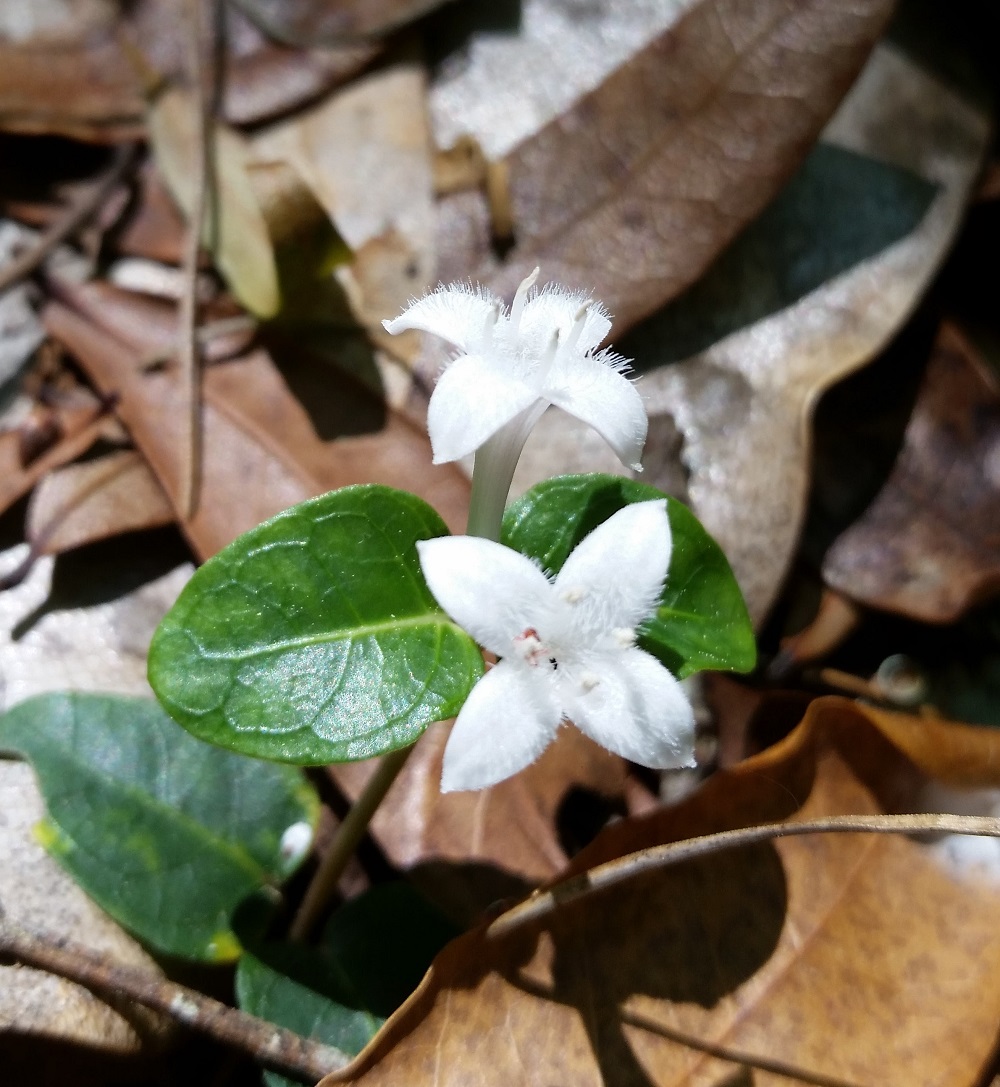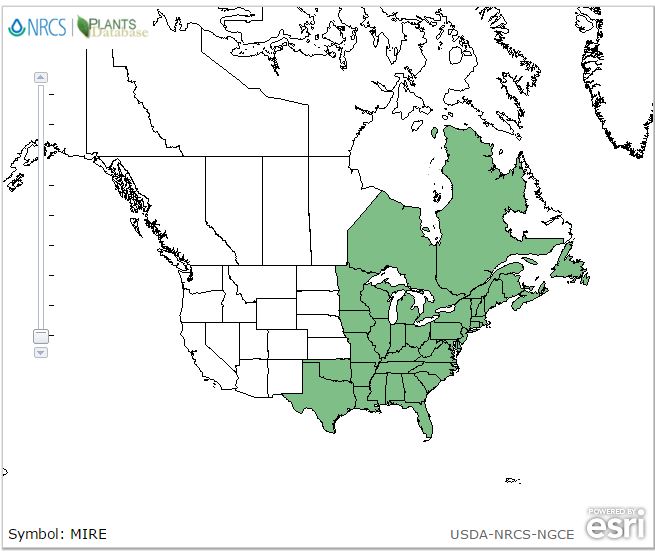Difference between revisions of "Mitchella repens"
(→Habitat) |
(→Cultural use) |
||
| Line 47: | Line 47: | ||
==Cultural use== | ==Cultural use== | ||
| + | Historically, a tea from this plant was used in treating insomnia, water retention, and diarrhea, and it was and aid in childbirth.<ref> Korchmal, Arnold & Connie. 1973. A Guide to the Medicinal Plants of the United States. The New York Times Book Company, New York.</ref> | ||
| + | |||
==Photo Gallery== | ==Photo Gallery== | ||
<gallery widths=100px> | <gallery widths=100px> | ||
Revision as of 19:36, 9 June 2021
| Mitchella repens | |
|---|---|

| |
| Photo by Katelin Pearson | |
| Scientific classification | |
| Kingdom: | Plantae |
| Division: | Magnoliophyta - Flowering plants |
| Class: | Magnoliopsida – Dicotyledons |
| Order: | Rubiales |
| Family: | Rubiaceae |
| Genus: | Mitchella |
| Species: | D. repens |
| Binomial name | |
| Mitchella repens L. | |

| |
| Natural range of Mitchella repens from USDA NRCS Plants Database. | |
Common name: Partridge-berry[1]
Contents
Taxonomic notes
Synonyms: none.[1]
Varieties: none.[1]
Description
Distribution
M. repens ranges from Novia Scotia, west to Minnesota, and south to central peninsular Florida and Texas. There are disjunct populations in Guatemala.[1]
Ecology
Habitat
M. repens has been found in mesic hardwoods, pinewoods, floodplains, streambanks, Beech-magnolia woods, live oak groves, bogs, and swamps.[2] It is also found in disturbed areas including along fire breaks, railroads, and roadsides.[2] Associated species: Pinus strobus, Acer saccharum, A. rubrum, Betula lenta, Fraxinus americana, Quercus rubra, Fagus grandifolia, Acer pensylvanicum, Caulophyllum thalictroides, Athyrium angustum, Tiarella cordifolia, and Polygonatum biflorum.[3]
Phenology
M. repens is an evergreen, but flowers from May through July and flowers from June through July.[1]
Conservation, cultivation, and restoration
Cultural use
Historically, a tea from this plant was used in treating insomnia, water retention, and diarrhea, and it was and aid in childbirth.[4]
Photo Gallery
References and notes
- ↑ 1.0 1.1 1.2 1.3 1.4 Weakley, A.S. 2015. Flora of the southern and mid-atlantic states. Working Draft of 21 May 2015. University of North Carolina at Chapel Hill, Chapel Hill, North Carolina.
- ↑ 2.0 2.1 Florida State University Herbarium Database. URL: http://herbarium.bio.fsu.edu. Last accessed: June 2021. Collectors: Loran C. Anderson, K. Craddock Burks, Patricia Elliot, J. P. Gillespie, and R.K. Godfrey. States and counties: Florida: Jefferson, Levy, Leon, Liberty, and Wakulla.
- ↑ Brown University Herbarium accessed using Southeastern Regional Network of Expertise and Collections (SERNEC) data portal. URL: http://sernecportal.org/portal/collections/index.php Last accessed: June 2021. Collectors: Sophie Duncan, Andrew Pisaturo, and Timothy J. S. Whitfeld. States and Counties: Massachusetts: Berkshire.
- ↑ Korchmal, Arnold & Connie. 1973. A Guide to the Medicinal Plants of the United States. The New York Times Book Company, New York.